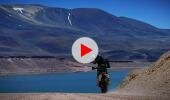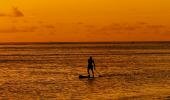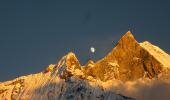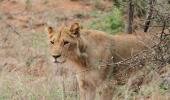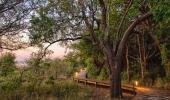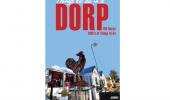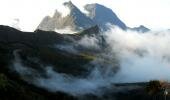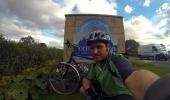Words: Hanneke Pienaar-Steenekamp ǀ Photos: Hanneke Pienaar-Steenekamp & Van Zyl Steenekamp
When we climbed on the plane heading for Réunion Island, it was with a feeling of relief. The weeks beforehand had been spent running around trying to tie all the loose ends and finishing projects that couldn't wait until we got back. Relief was soon replaced with excitement and then an appreciative awe as we neared St. Denis, the capital of this French 'province'.
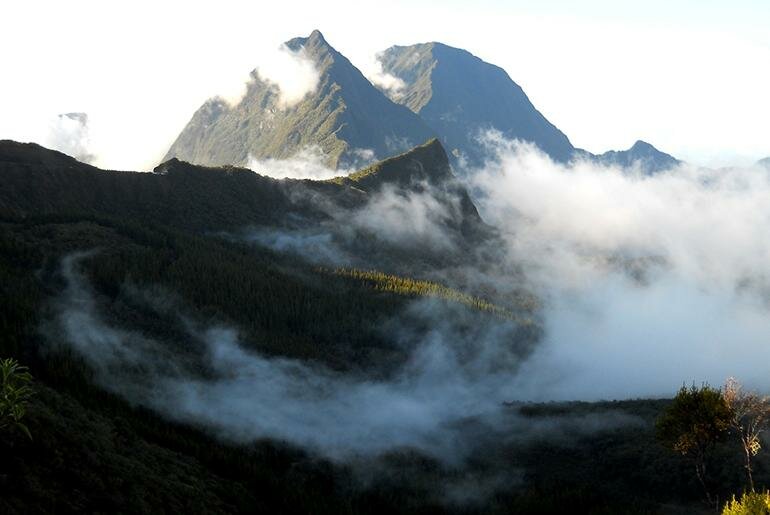
It was a bit of a culture shock to be addressed in French and only French! Especially if your French consists of bonjour, au revoir, and no parle pas français! It is amazing how many words you pick up in a very short time if you have no other option. Once the bridge over the language barrier was built, we soon discovered that the Réunionnaise have warm and welcoming souls. They are also inordinately proud of their island, their history, and Creole culture.
If you are wondering what there is to do on Réunion, the answer is: EVERYTHING! This island is not meant for lounging on the beach, although I guess there is that, too. Activities include hiking or trail running in the cirques (circular valleys that form a clover pattern around their highest peak Piton de Neiges), diving at some of their world-class dive sites on the western coast, paragliding around St. Leu, doing heart-stopping mountain bike downhills (2,000 m descent over a distance of 40 km), checking out the active volcano, or exploring the thousands of hidden valleys with their numerous waterfalls.
Our biggest problem, in the end, was how to fit everything we wanted to do into the short 10 days that we would be there. Eventually we settled on hiking, diving, mountain biking, and seeing the volcano.
The hike we settled on was a combination of two of the most popular routes in the cirques, the Tour de Cirques and the Tour de Mafate. The French are very proud of the fact that the Cirque de Mafate is the only area in France that you cannot get to by road. The only way to travel to and between the towns in this valley is on foot. Food, building materials, and other necessities are flown in with helicopters, and refuse is removed the same way.
We started with a bus ride to Le Maïdo, a peak overlooking the Cirque de Mafate at an altitude of about 2,200 m. The first day was spent descending almost 1,800 m to the valley bottom and circling around the western side of the valley. We spent the night in a Gîte, or mountain hut, in the small and picturesque Aurère. The next day had us covering the eastern side of the valley, following the Sentier Augustave route and this part of the hike was truly spectacular! Not only did we not see a single other human but it is also in virgin forest with beautiful waterfalls rushing down the cliffs on either side of the valley. The Sentier Augustave road has recently been repaired and is nice and easy going all the way up to the ridge, which separates the Cirque de Mafate from the Cirque de Salazie. We followed this road for about a kilometre before returning to the hiking trail, to cross back over the ridge of Col des Bœufs and into the Cirque de Mafate, where we spent the night in La Nouvelle, the 'capital' of the Cirque de Mafate.
After two days of soaking up the untamed beauty of the Cirque de Mafate, we ventured over the southern ridge to the Cirque de Cilaos. This valley is famous for its wine. When the French first came to this island, they found that they couldn't do without their wine, so they cultivated some vineyards on the slopes of this valley. The main town in the valley is Cilaos and looks like a small town right out of the southern parts of France. There are numerous artisan boulangers and patissiers where you can buy fresh pain au Chocolat for breakfast or your daily baguette. The sidewalks are paved with sliced igneous rock, the bubbles in the rock a subtle reminder of its origin. We decided to have a rest day in Cilaos, making the most of the wonderful French cuisine and local wine on offer before tackling the highest peak, Piton des Neiges (3,070 m) the following day.
We set of early the next morning for Piton des Neiges because the guide books advise you to get to the summit mid-morning, to get the best view over the island before the clouds start flocking in and obscuring the view. From the top, you can see the whole of the Cirque de Cilaos to the east and the Cirque Salazie to the north-west. The top of the Piton de Fournaise is usually visible towards the south, although this mountain also tends to draw clouds towards it later during the day.
Coming down from the summit, we continued towards the east on the southern rim of the Cirque de Salzie. The forest in this area is known as the Forêt de Bébour-Bélouve and is one of their natural Heritage Sites. Huge trees tower over you and as they are exposed to a constant mist coming up from the Salazie basin, it is ideal for tree orchids, which grow here in abundance. Enormous tree ferns, which almost look like palm trees as they tower out from the forest around them, also grow in profusion. There are numerous trails of varying length into this forest that can be explored if you are keen on only doing day hikes.
During our five days of hiking, we met numerous trail runners training for the big Grand Raid Réunion. This 163 km, 66 hours, single-stage trail run kicked off on 17 October. The runners' training strategy was to stay in one village that could be accessed by road, then take the very reliable public transport around the island to where you want to start, and then run back to the village where they were staying. Next time we will definitely bring our trail running gear and join them!
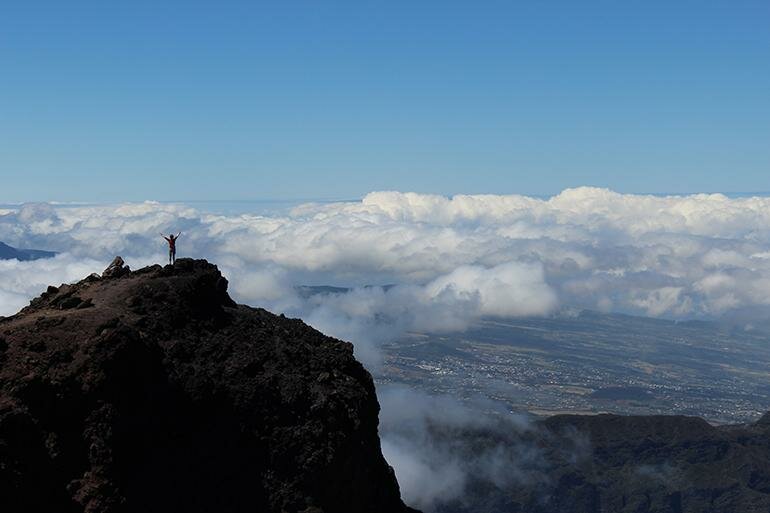
Our next stop was the volcano! I must say that the only reason this was worked into our programme was because I thought we would never get this close to a volcano again in our travels, never mind an active volcano. I really didn't expect much beforehand and saw it more as something to tick off a to-do list. Well to be honest, I couldn't have been more wrong. The Piton de la Fournaise is well worth the visit, and I recommend it to all first-time visitors to Réunion! Compared to the rest of the island, this area is barren, but strikingly so. You can walk from the viewpoint to the active crater. During the walk, you cross a huge plain of solidified lava, with interesting flow patterns. The lava from various eruptions differ in the consistency and mineral content, some are sparkling and have a shiny crust, others are clumpy, and then there's the classic liquid lava. Another bonus is that you can actually walk to the rim of the active crater and see some sulfur gas coming out of the bottom. This volcano is reckoned to erupt every three years, with the last eruption in December 2010. From the crater, you can look down the southern coast and cold river of lava, as it flows toward and into the ocean after erupting. Plan a whole day for this trip, including travelling and hiking the 14 km route to the crater and back, and don't forget water!
Following our sojourns in the mountains, we beat a trail back to the coast to dive at St. Leu. The diving is truly world class. In the shallow waters there are lots of juvenile reef fish and small coral formations, and we were even lucky enough to see a small eel and coral reef fish. We also went scuba diving (the dive centres are all a bit skeptic if you tell them you free-dive) and the visibility was crystal clear, the marine life spectacular, and we got to see some crayfish, moray eels, and clown anemone shrimps.
Travelling north along the western coast, we made a stop in St. Gilles les Bains for our much-anticipated 40 km downhill mountain bike. Rando Réunion Passion, a company that rents out bikes and specialises in downhill tours of the island, took us to the starting point. The routes are adapted according to your level of expertise, so even if it is a big group, they still give the more-skilled riders a chance to test themselves. The route we took was from Le Maïdo and this is also where they have an annual downhill mountain bike race in Réunion. It was an impressive ride through the national park, flashing past trees and navigating sharp bends. After the national park, you pass mostly through farmlands with interesting hills and drops that test your skills.
Spending our last afternoon on the beach at Boucan Canot, enjoying glacée (ice cream and sorbet of every flavour imaginable) in the heat, we couldn't believe it was all over. So plans for our next trip where discussed then and there, as there were far too many unexplored valleys and paths still to be seen!
Travel tips
• If you want to exchange rands to euros, you must do it in South Africa because you can only draw euros at the ATMs. There is no Bureau de Change.
• French is the main language on the island, so either learn some basic French or take a phrase book with you.
• When hiking in the cirques, it might be best to book accommodation in advance, especially in the smaller towns.
This can be done on their tourism website: www.reunion.fr/en/
• Hiking is best done in their drier season, which is from April to November.
• There is a very reliable bus network for both national roads, as well as smaller regional areas. For those that like getting around faster, renting a car is also an affordable option.
• Except for the fact that you are paying in euros, accommodation and food is not too expensive. It also helps that there is almost no place where you have to pay park fees or entrance fees to tourist sites. Diving works out about the same as in South Africa.
